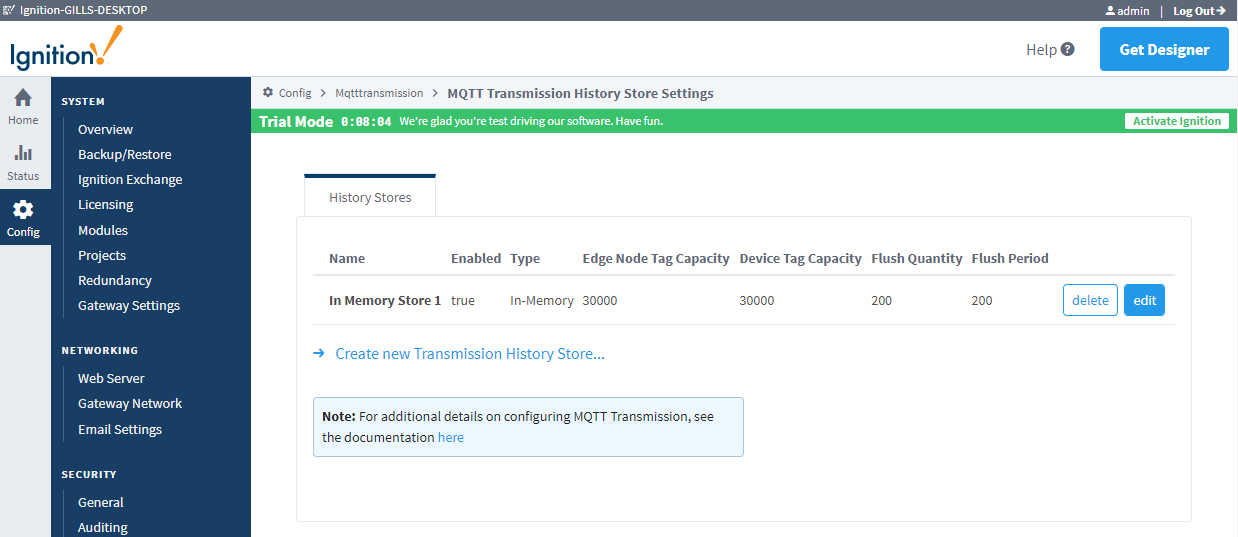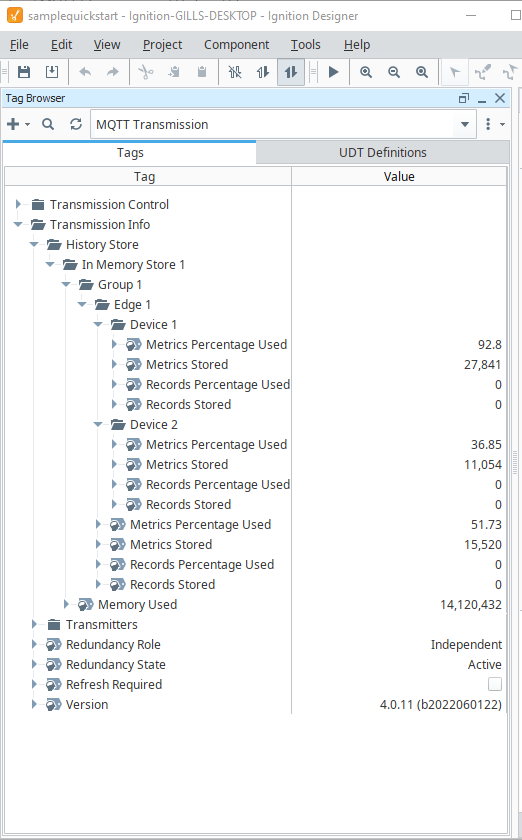
Determining the settings for the MQTT Transmission History Store requires understanding the unique system properties at each Edge Node.
These include the number of tags at the Edge Node and Device levels, the frequency at which these tags are changing, the required period for data storage and the RAM or disk based storage available on the Edge hardware.
Testing is the best way to determine your settings for your Edge Gateway(s) and the recommended approach is to:
For ease of control we recommend setting a Primary Host ID in both MQTT Engine and in the MQTT Transmission. Removing the Primary Host ID from MQTT Engine will simulate the primary backend application going offline and cause MQTT Transmission to store data to the History Store. Restoring the Primary Host ID to MQTT Engine will simulate that the primary backend application is online and cause MQTT Transmission to flush the stored data. |
In this example, I have a History Store set up with 30,000 tags for both Edge Node and Device Tag Capacity

At the Edge, I have 10 tags associated with the Edge Node, 20 tags associated with Device 1 and 8 tags associated with Device 2. Whilst fully connected, the Transmission Info > History Store folder looks as below:

Once I remove the Primary Host ID from MQTT engine, we can see the metrics update real time
